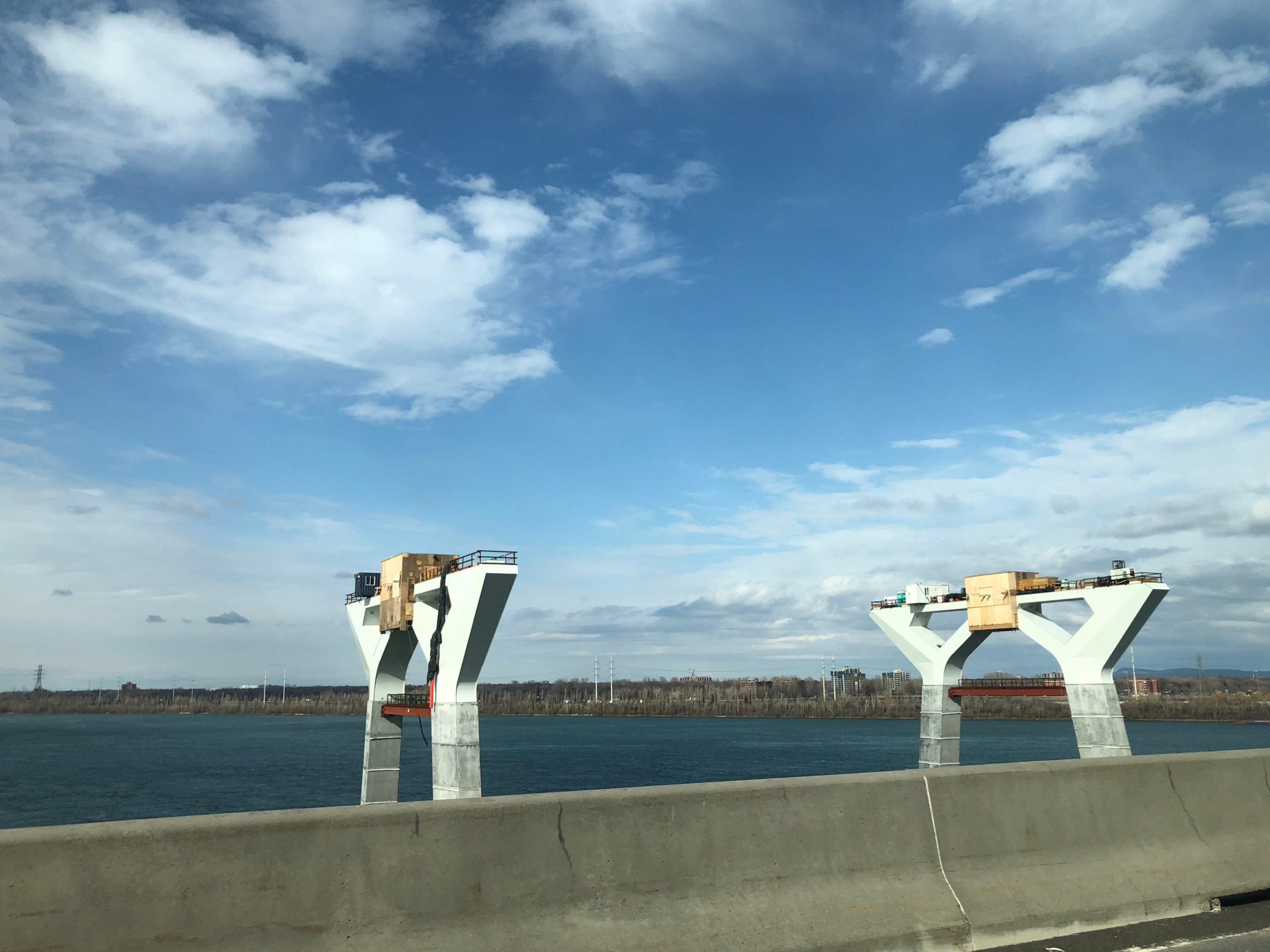As many local residents know, the existing Champlain Bridge in Montreal is being torn down and a new cable bridge is being built in its place. The bridge is a critical connection between the island of Montreal and the rest of the province. Sitting at almost 3.5km long, this bridge has become an iconic part of Montreal’s skyline since it first opened to the public in 1962 and is the largest bridge in Canada.
The main reason behind this project is the deterioration of the first bridge. The harsh weather conditions in the winter lead local crews to heavily salt the bridge in the winter to aid drivers and maintain traffic. However, such large amounts of salt frequently deteriorate the materials that make up the bridge. In its revitalization, the new bridge uses materials that are anticipated to give it a life of more than 100 years. With such a long-life expectancy, the new bridge is also designed with an updated and much more modern design.
Construction of the new 3.5km long bridge began in June 2015 and had an initial timeline of just under four years of construction time. This represents an aggressive deadline given the many environmental and economical factors impacting its construction. Firstly, there are several concurrent road improvement projects impacting traffic patterns and competing for similar resources. Secondly, Montreal faces harsh weather conditions during the winter months, making it more difficult for crews to complete their work. In order to counteract these conditions, the team responsible for the bridge’s construction has set out to prefabricate some of the major bridge components. This would considerably reduce the construction time and help the project remain on course.
ATS has been involved with many contractors working on the new Champlain Bridge project from the beginning of the project 4 years ago by supply 20’ storage containers and 20’mobile office units at the various work sites and on the bridge itself!. Our 20’ and also 10’ containers fit very well in tight spaces in a way that doesn’t inconvenience the crews at work. They are also equipped with secure lockboxes to protect the contents of each container and the modular design of each shipping container makes it easy to relocate along the 3.5km road as needed.
We are glad to be contributing to the build of something that will help generations to come access the beauty of the city of Montreal, even if it is in a small way. We look forward to driving across the new span when the bridge is expected to open later this year.
To read more about the project, visit this link.
